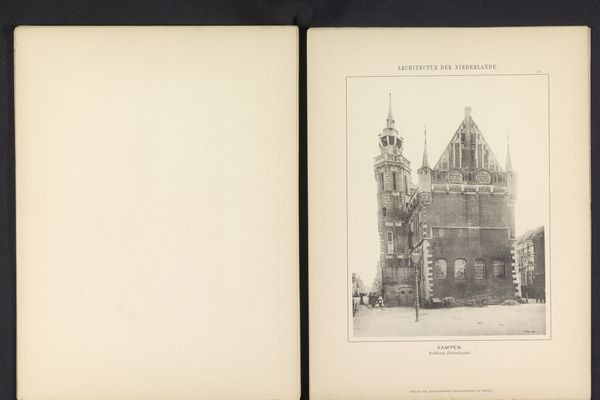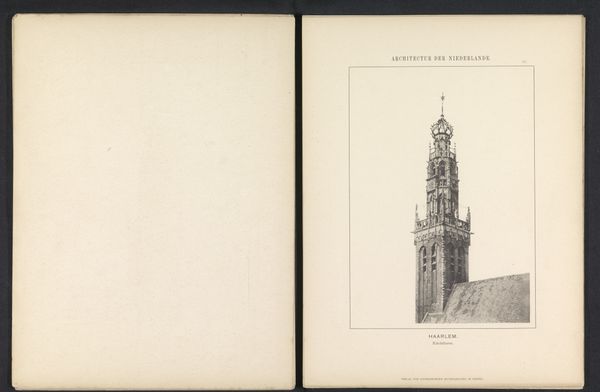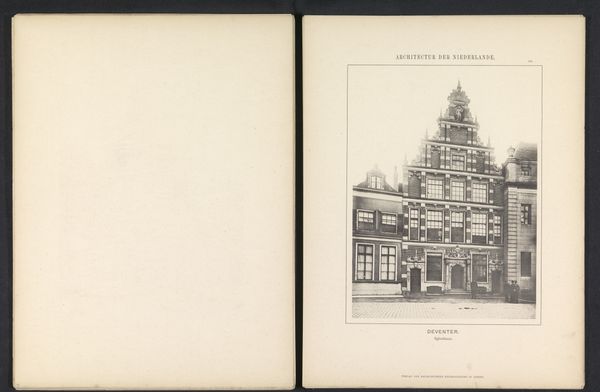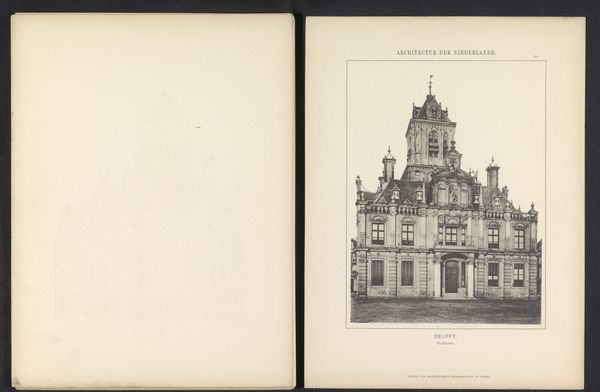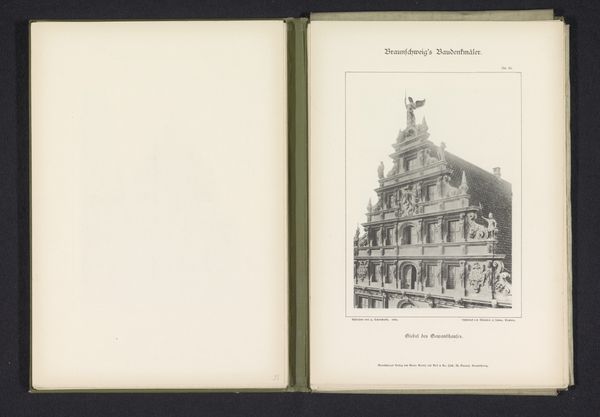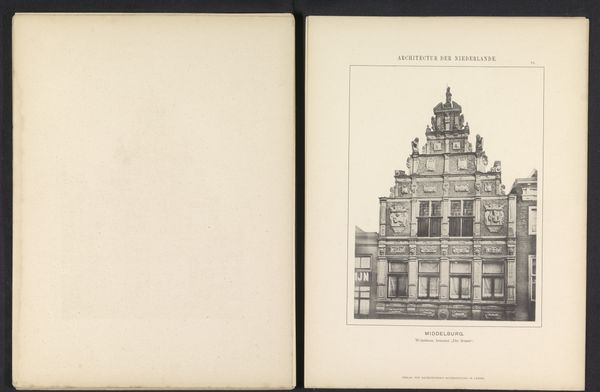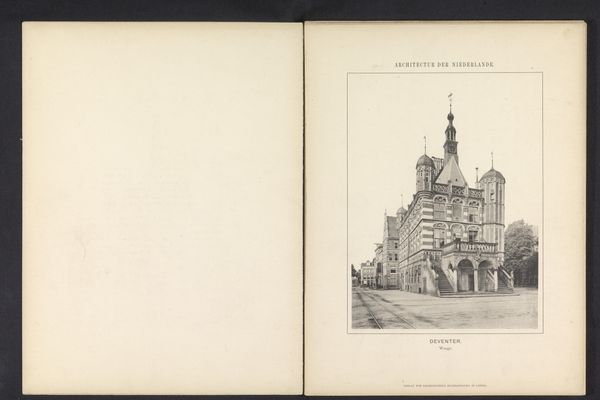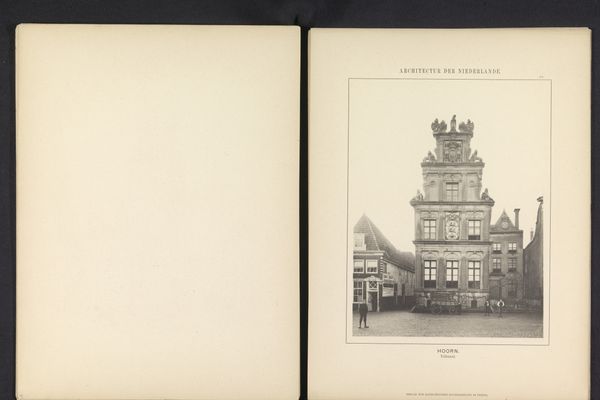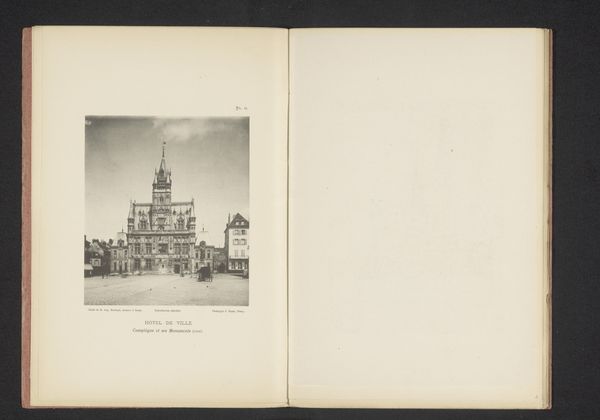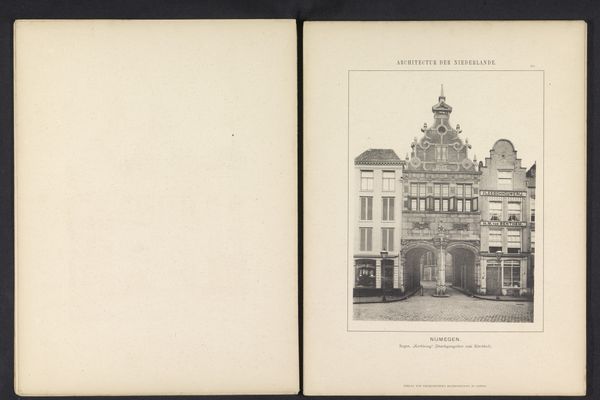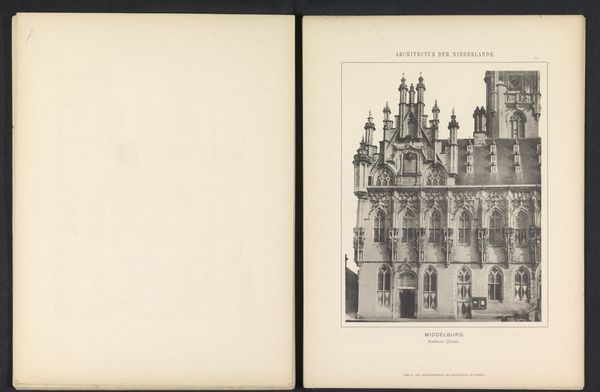
print, photography, architecture
# print
#
photography
#
cityscape
#
architecture
Dimensions: height 252 mm, width 190 mm
Copyright: Rijks Museum: Open Domain
Curator: What a compelling image! We're looking at an architectural photograph titled "Gezicht op de Hoofdtoren in Hoorn," capturing the Hoofdtoren before 1894. It’s held in the Rijksmuseum collection. Editor: It’s stark. The tonal range in this photogravure print really emphasizes the texture of the brick and stone. There’s something so stoic about this tower—it feels monumental. Curator: Yes, and I think its monumentality is linked to its public function. As a key architectural element in Hoorn, the tower visually represents power, civic pride, and stability. Consider its presence in shaping the town’s collective identity, and how prints like these help solidify those meanings. Editor: Agreed. It's not just stone and brick, but a representation of collective labor and skill. The very act of capturing and disseminating this image would require resources, chemical processes, and specialized craftspeople. Think about the lives of the workers quarrying the stone, and crafting those ornate clock details; what were their lives like? Curator: Absolutely. And in terms of photographic printmaking, we see a shift towards mass reproduction. Disseminating prints was, historically, about politics. We might also consider this within the history of architectural documentation, serving the burgeoning field of urban planning. Editor: Indeed, while looking at this image, it also evokes the question about circulation of materials and skills across borders and class boundaries. The making and meaning of things extends way beyond aesthetics. Curator: Well, on that note, it makes me ponder about preservation of architectural heritage over time. What decisions led to that specific viewpoint? Was this purely documentation or strategic promotion? Editor: Fascinating. I feel as though I understand more now. From mere materials and methods to meanings imbued into public life, there is always a story worth telling. Curator: Exactly. Now, if our visitors will allow, it may be time to contemplate its history, civic identity and even craft. Thanks for walking me through that!
Comments
No comments
Be the first to comment and join the conversation on the ultimate creative platform.

